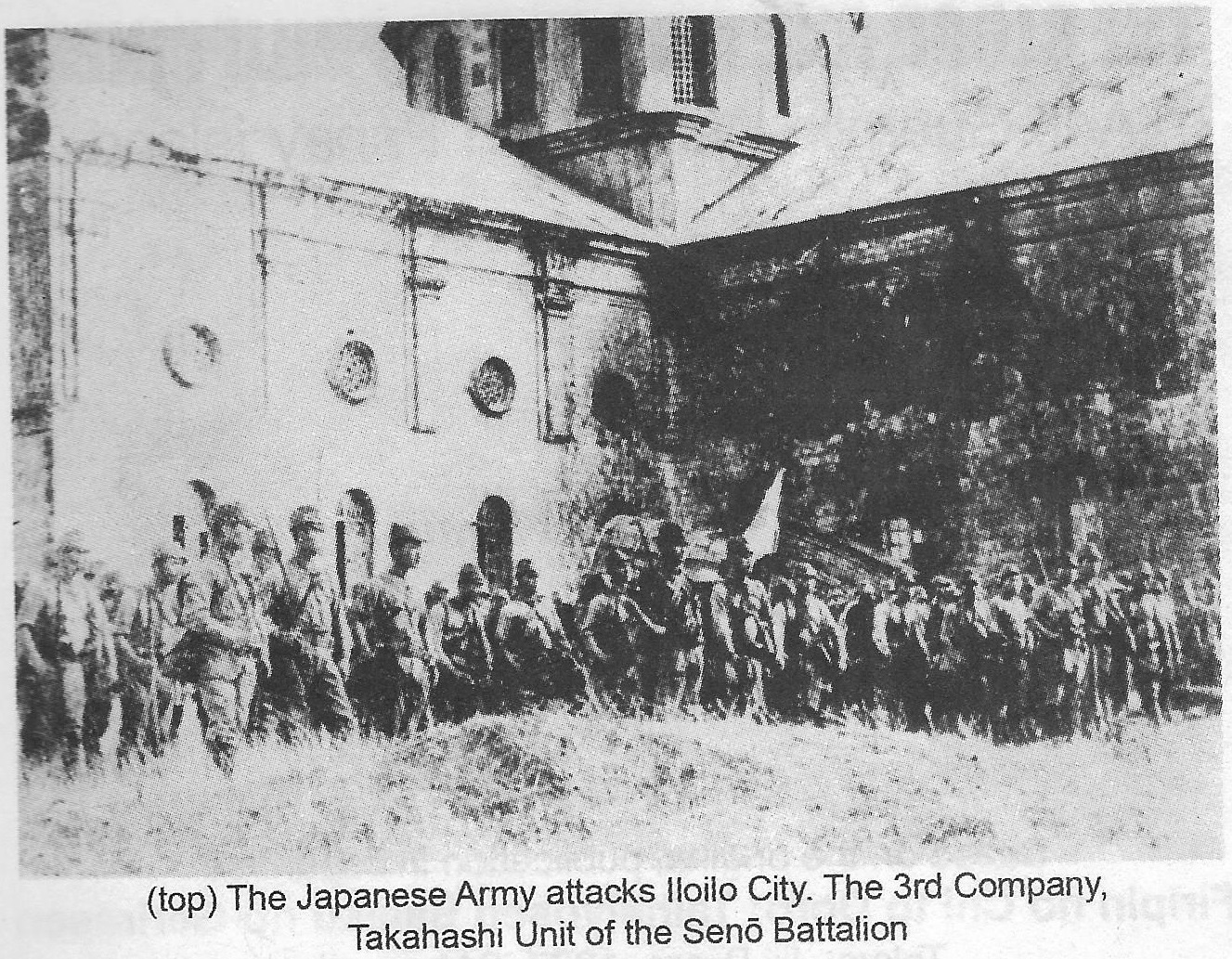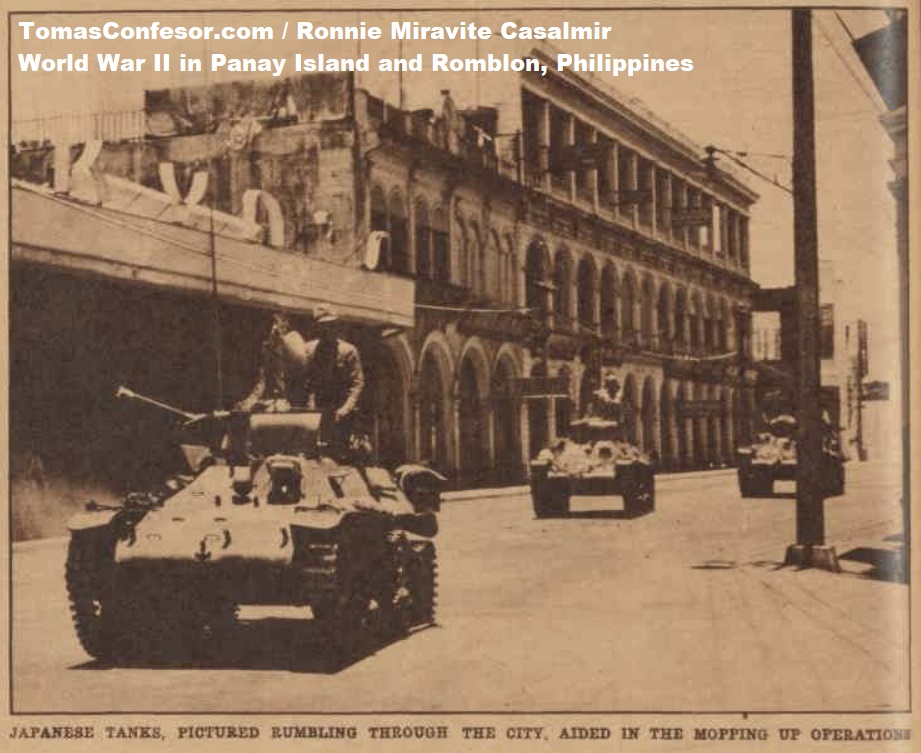JAPANESE GETS UNDERWAY FROM LINGAYEN
BOUND FOR OTON AND CAPIZ
The Kawamura Detachment, on board ten transports in a convoy escorted by Destroyer Division 24, sortied from Lingayen on April 12 and, in one line, headed south.
Two days after its departure, the radio announced news of the Kawaguchi Detachment’s successful landing in Cebu.
On April 14, while off Mindoro, a section of the convoy broke off to head east for Capiz.
The main force was to land on the coast west of lloilo City, and a detachment was to land at a beach near Capiz.
JAPANESE LANDS IN OTON
AT A SPOT WEST OF THE TOWN PROPER
At 2 a.m. of April 16,1942, the main convoy anchored off the village of Trapiche near the town of Oton, 13 kilometers west of Iloilo City. There was not a flicker of light on the coast, the coconut grove was dark and one could only see the stars in the sky. The convoy caught the enemy by surprise and not even a single shot was heard. The landing force boarded their landing craft in darkness and went ashore.
By dawn, all the forces were ashore and landing operations were completed.
JAPANESE SPLITS AT OTON
THE MAIN STRENGTH HEADS NORTH TOWARDS CABATUAN
WHILE THE LESSER STRENGTH HEADS EAST TOWARDS OTON TOWN PROPER ON WAY TO ILOILO CITY
The Japanese invasion forces split into two at Oton.
The main strength of the Kawamura Detachment headed north.
The forces bound for Iloilo City marched into the Oton town center.

Old Oton Church.
The Japanese Army attacks Iloilo City. The 3rd Company, Takahashi Unit of the Seno Battalion.
The Blood and Mud in the Philippines
JAPANESE ENTERS ILOILO CITY
The elements of the Seno unit–the 3rd Company (commanded by 1st Lieutenant Jôdo Takahashi) and 4th Company (commanded by 1st Lieutenant Matao Asahi)–entered Iloilo City later that morning (April 16, 1942).
The Japanese Army, led by light tanks, entered the city and proceeded to conduct mopping-up operations (sotô). However, the face of the enemy was nowhere to be found.
When the Japanese forces gathered in front of the church by the city’s plaza, the soldiers shouted three cheers (banzai) while the city was engulfed in dazzling flames, dark smoke and the sweet sour odor of burnt sugar. There were no electric lights, no water in the city of Iloilo that night.

Japanese tanks, pictured rumbling through the city, aided in the mopping up operations.
JAPANESE MAIN STRENGTH REACHES LAMBUNAO
In the evening of the 16th, the front line units of the main strength of the Kawamura Detachment that had headed north from Oton advanced to the town of Lambunao, 48 kilometers north of Iloilo City.
JAPANESE LANDS IN CAPIZ
Also before dawn on April 16, a unit of the detachment (the 2nd Company of the Seno unit, or the Takayema unit as it was sometimes called) landed without bloodshed in Baybay, three kilometers north of the town of Capiz. Soon Japanese troops occupied the provincial capitol while the main strength of the forces headed south along the main road towards lloilo City.
The Blood and Mud in the Philippines, Section 1.2






